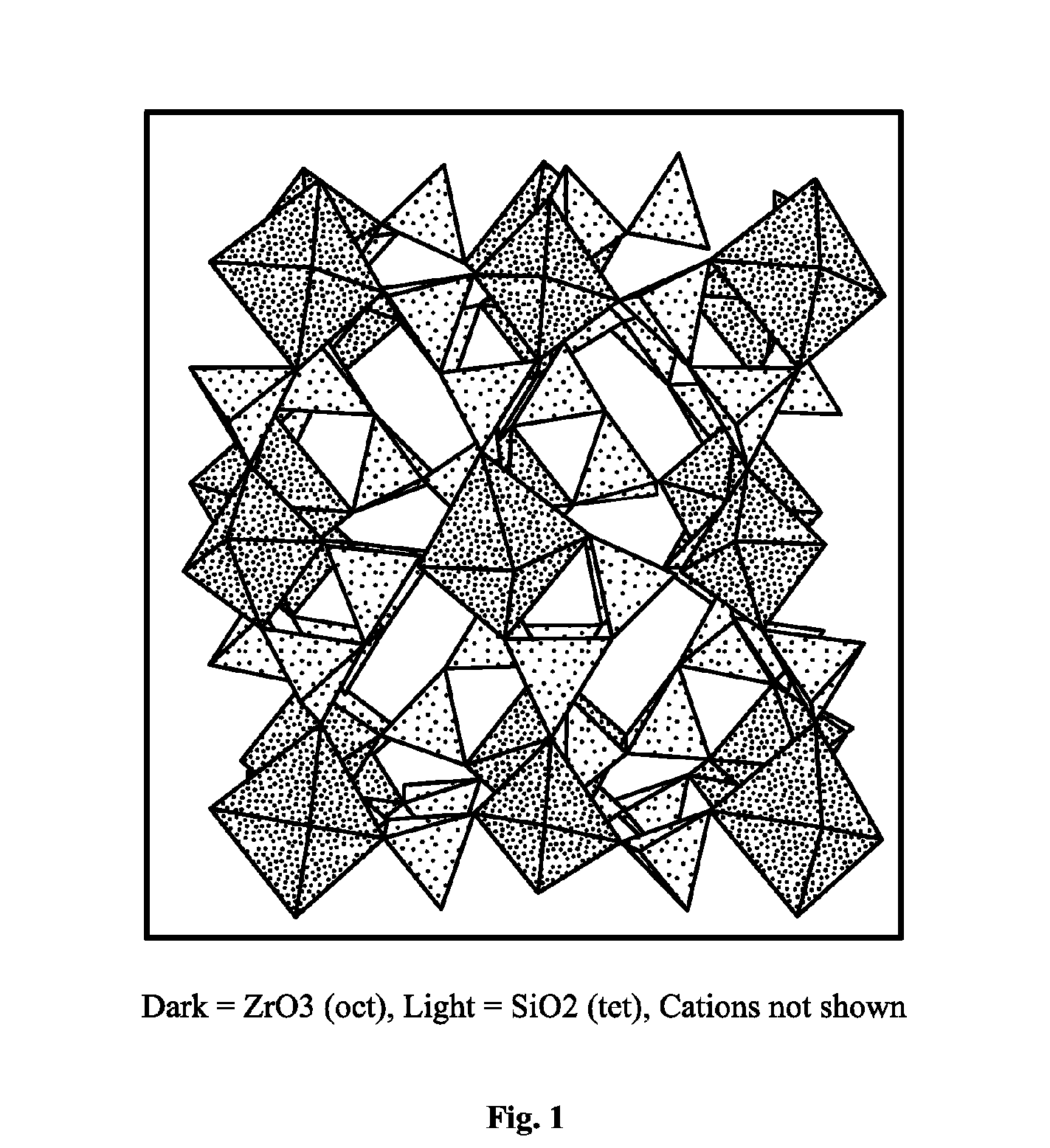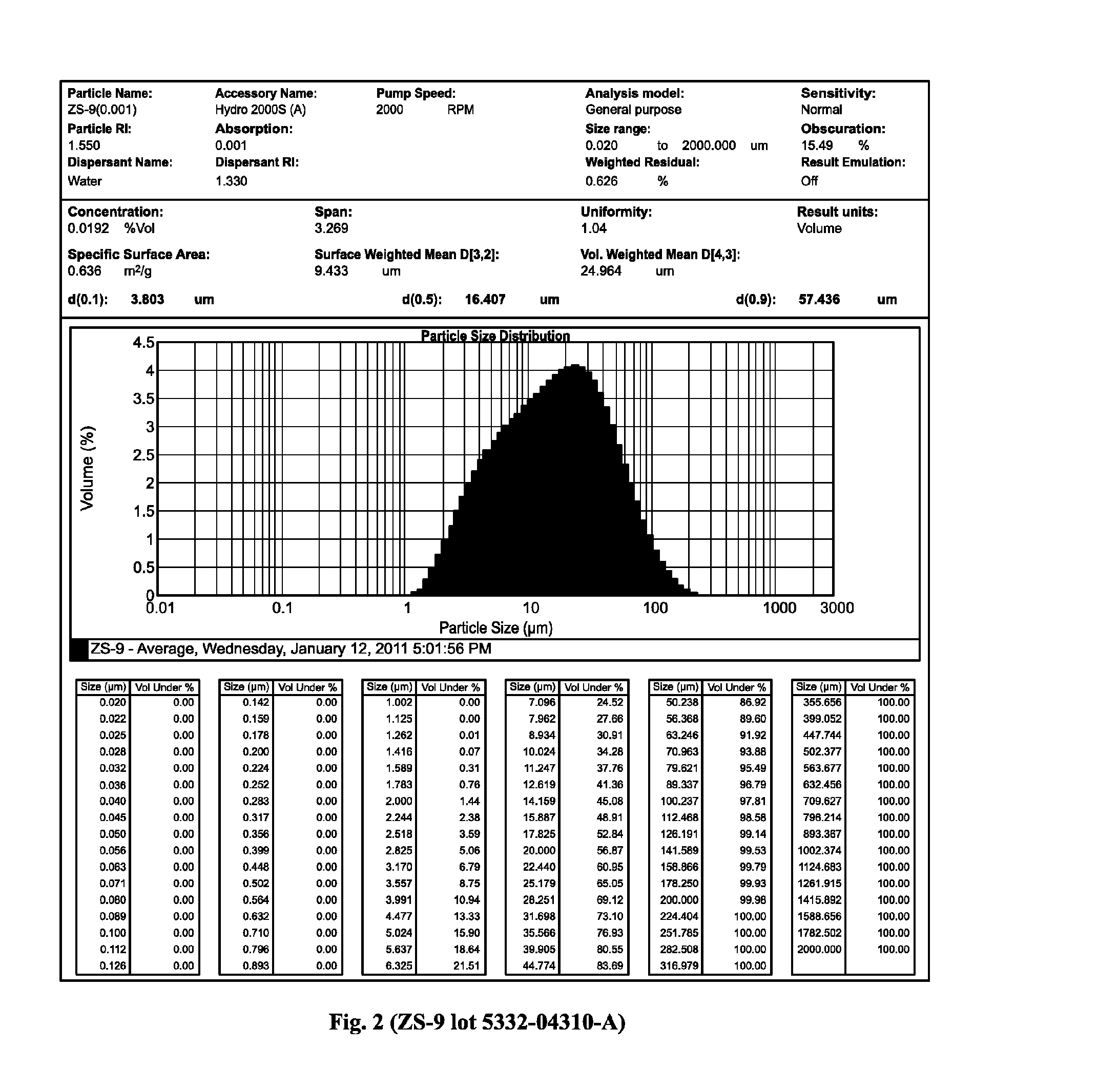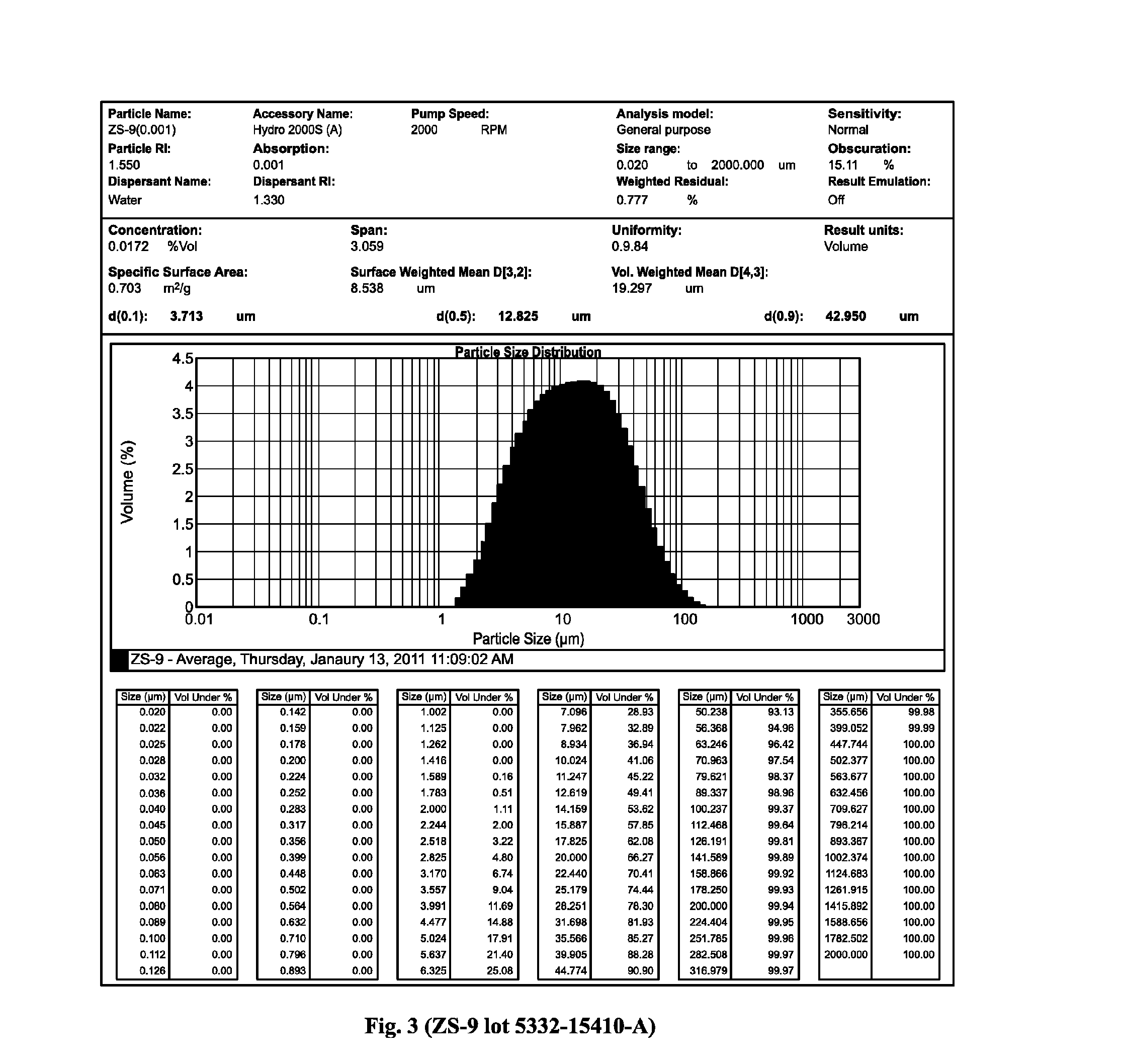Microporous zirconium silicate for the treatment of hyperkalemia
a microporous zirconium silicate and hyperkalemia technology, applied in the field of pharmaceutical compositions, can solve the problems affecting the normal functioning of the body, so as to achieve the effect of reducing the scrum potassium level
- Summary
- Abstract
- Description
- Claims
- Application Information
AI Technical Summary
Benefits of technology
Problems solved by technology
Method used
Image
Examples
example 1
[0149]A solution was prepared by mixing 2058 g of colloidal silica (DuPont Corp. identified as Ludox™ AS-40), 2210 g of KOH in 7655 g H2O. After several minutes of vigorous stirring 1471 g of a zirconium acetate solution (22.1 wt. % ZrO2) were added. This mixture was stirred for an additional 3 minutes and the resulting gel was transferred to a stainless steel reactor and hydrothermally reacted for 36 hours at 200° C. The reactor was cooled to room temperature and the mixture was vacuum filtered to isolate solids which were washed with deionized water and dried in air.
[0150]The solid reaction product was analyzed and found to contain 21.2 wt. % Si, 21.5 wt. % Zr, K 20.9 wt. % K, loss on ignition (LOI) 12.8 wt. %, which gave a formula of K2.3ZrSi3.2O9.5*3.7H2O. This product was identified as sample A.
example 2
[0151]A solution was prepared by mixing 121.5 g of colloidal silica (DuPont Corp. identified as Ludox® AS-40), 83.7 g of NaOH in 1051 g H2O. After several minutes of vigorous stirring 66.9 g zirconium acetate solution (22.1 wt. % ZrO2) was added. This was stirred for an additional 3 minutes and the resulting gel was transferred to a stainless steel reactor and hydrothermally reacted with stirring for 72 hours at 200° C. The reactor was cooled to room temperature and the mixture was vacuum filtered to isolate solids which were washed with deionized water and dried in air.
[0152]The solid reaction product was analyzed and found to contain 22.7 wt. % Si, 24.8 wt. % Zr, 12.8 wt. % Na, LOI 13.7 wt. %, which gives a formula Na2.0ZrSi3.0O9.0*3.5H2O. This product was identified as sample B.
example 3
[0153]A solution (60.08 g) of colloidal silica (DuPont Corp. identified as Ludox® AS-40) was slowly added over a period of 15 minutes to a stirring solution of 64.52 g of KOH dissolved in 224 g deionized H2O. This was followed by the addition of 45.61 g zirconium acetate (Aldrich 15-16 wt. % Zr, in dilute acetic acid). When this addition was complete, 4.75 g hydrous Nb2O5 (30 wt. % LOI) was added and stirred for an additional 5 minutes. The resulting gel was transferred to a stirred autoclave reactor and hydrothermally treated for 1 day at 200° C. After this time, the reactor was cooled to room temperature, the mixture was vacuum filtered, the solid washed with deionized water and dried in air.
[0154]The solid reaction product was analyzed and found to contain 20.3 wt. % Si, 15.6 wt. % Zr, 20.2 wt. % K, 6.60 wt. % Nb, LOI 9.32 wt. %, which give a formula of K2.14Zr0.71Nb0.29Si3O9.2*2.32H2O. Scanning Electron (SEM) of a portion of the sample, including EDAX of a crystal, indicated the...
PUM
| Property | Measurement | Unit |
|---|---|---|
| diameter | aaaaa | aaaaa |
| particle size | aaaaa | aaaaa |
| pharmaceutical composition | aaaaa | aaaaa |
Abstract
Description
Claims
Application Information
 Login to View More
Login to View More - R&D
- Intellectual Property
- Life Sciences
- Materials
- Tech Scout
- Unparalleled Data Quality
- Higher Quality Content
- 60% Fewer Hallucinations
Browse by: Latest US Patents, China's latest patents, Technical Efficacy Thesaurus, Application Domain, Technology Topic, Popular Technical Reports.
© 2025 PatSnap. All rights reserved.Legal|Privacy policy|Modern Slavery Act Transparency Statement|Sitemap|About US| Contact US: help@patsnap.com



